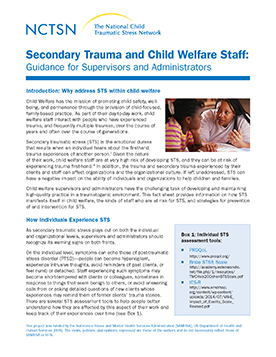
Secondary Trauma and Child Welfare Staff: Guidance for Supervisors and Administrators
Gives supervisors and administrators in the child welfare system the information on the importance of addressing secondary traumatic stress (STS).
The following resources on child trauma were developed by the NCTSN. To find a specific topic or resource, enter keywords in the search box, or filter by resource type, trauma type, language, or audience.

Gives supervisors and administrators in the child welfare system the information on the importance of addressing secondary traumatic stress (STS).
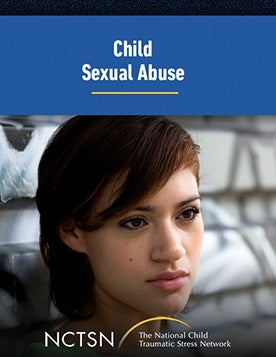
Discusses prevention and intervention strategies for child sexual abuse. This webinar gives ways to help prevent child sexual abuse, as well as intervention strategies upon disclosure.
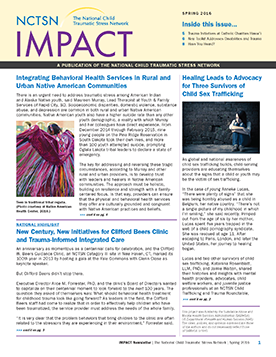
Describes integrating behavioral health services in rural and urban Native American communities, outlines the story of healing for three survivors of child sex trafficking, and other highlights.
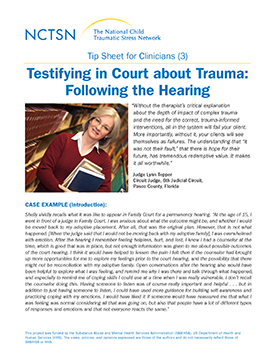
Provides information on the importance of follow-up after testifying. This fact sheet, a part of the Testifying in Court about Trauma series, focuses on follow-through for clinicians, clients, and their caregivers after the court process.
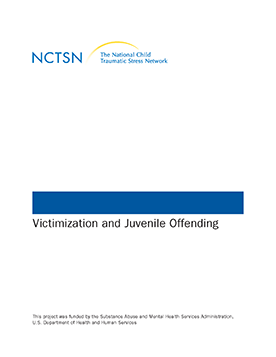
Discusses the correlation between victimization and juvenile offending.

Provides educators and school staff information on the challenges that occur when there is an allegation of educator abuse.
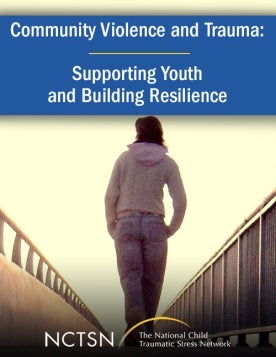
Explores both the historical and current causes for disproportionality.
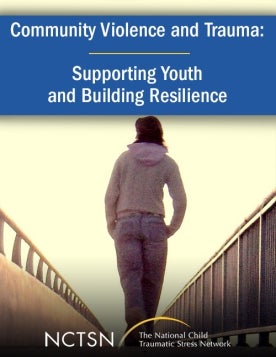
Provides expertise on the impact of violence on youth. This webinar presents best practices for prevention and trauma intervention for youth impacted by community violence and trauma.

Is a compilation of resources stemming from the NCTSN Implementation Summit including the full Implementation Summit Panel video, bibliographies from the Summit and Implementation Task Force (ITF), an Implementation Glossary, Evidence-Based Treatment Resources Abstract list and more.
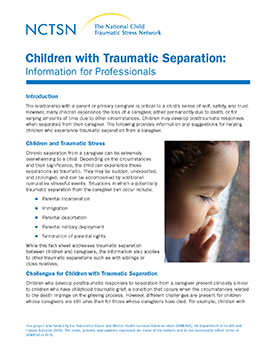
Provides information and suggestions for helping children who experience traumatic separation from a caregiver. This fact sheet describes how many children experience the loss of a caregiver, either permanently due to death, or for varying amounts of time due to other circumstances.
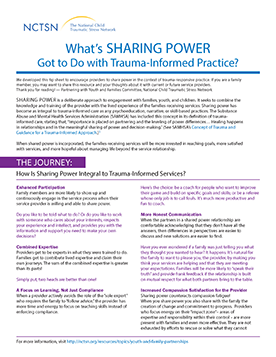
Encourages providers to share power in the context of trauma-responsive practice.

Helps parents talk to their kids about the disasters they may face and know how best to support them throughout—whether sheltering-in-place at home, evacuating to a designated shelter, or helping your family heal after reuniting.